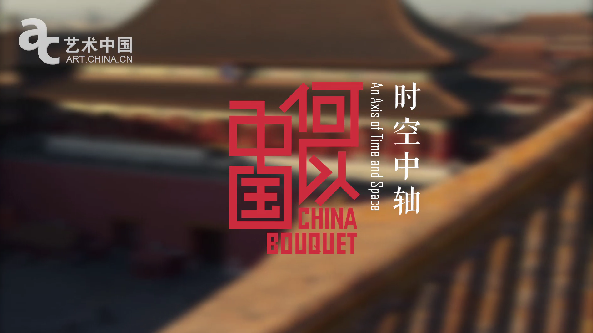|
【何以中国】 在21世纪全球化潮流之中,什么才是中国? 哪些是我们几乎遗忘的民族记忆? 哪些是在世界文化潮流中,当代中国的精神特质? 我们将基于什么来创造中华文明在世界中的当代贡献? “何以中国”系列短视频节目立足中国历史,寻找中国传统文化元素在当下的复兴,探寻通往中国文化深层精神内核的路径。 【第六期·时空中轴】  在北京故宫中和殿内,悬挂着一幅匾额,上有乾隆御题“允执厥中”四字,出自《尚书·大禹谟》,意在告诫君王唯有秉持中和之道,才得以治天下。 Suspended inside the Hall of Central Harmony at Beijing’s Forbidden City, a horizontally-inscribed board written by Qianlong Emperor says,“Devote to that of Neutrality and Impartiality”. This phrase originally came from The Book of Documents – Counsels of the Great Yu, and warns emperors that only by being neutral and impartial can one govern a nation. 从空中俯瞰北京城,会发现整座城市不论如何拓展,中轴线始终纵贯南北,使城市沿中轴左右对称。这种中轴对称的城市规划观念,自先秦时期便已形成。而今天看到的北京中轴线在元朝就已形成基本形制,一直延续至今。 When looking at Beijing from a bird’s eye view, one will discover that no matter how much the city expands, it’s central axis still runs from south to north, allowing Beijing to be completely symmetrical, left and right. This concept of urban planning is called“central-axis symmetry”; it has been in existence since the Pre-Qin Period. The basic form of the central axis we see in Beijing today took shape as early as Yuan Dynasty, and is still in use today. 北京中轴线南起永定门,一路向北经前门、正阳门、天安门、端门、午门、太和门,跨越太和、中和、保和三大殿,穿乾清宫、交泰殿、坤宁宫、神武门,越过景山万春亭、鼓楼,直抵钟楼,全长7.8公里,途径42座皇家建筑。整条轴线如同“中”字的一竖,成为贯穿北京外城、内城、皇城的通道;也像一把尺,丈量与标记着这座城市的土地。 Beijing’s central axis begins in the south at Yongding Gate and works its way north through the Front Gate, Zhengyang Gate, Tiananmen Square, Duan Gate, Wu Gate, and Taihe Gate. In addition, the axis spans over Taihe, Zhonghe and Baohe Halls, passes through Qianqing Palace, Jiaotai Hall, Qunning Palace and Shenwu Gate, runs across the Wanchun Pavilion inside Jing Mountain, the Drum Tower, and finally ends at the Bell Tower. It is7.8 kilometers long, and touches upon42 imperial buildings. The axis, which looks like the vertical stroke inside the Chinese character of“中(Middle)”, is a passage that penetrates the outer, inner, and imperial cities. You can also say that the axis looks like a ruler that measures and labels the grounds of Beijing. 孔子曰:“不偏为中,不变为庸”。而这种不偏不倚的中庸之道几千年来内化成了中国人的民族意识与内在性格。不论建筑布局、城市规划,甚至人伦秩序,处处渗透着中和思想对中国人行为观念的影响。 Confucius once said,“the mean is unbiased, unchanging is moderation.” In the past millennia leading up to today, the Doctrine of the Mean, promoting impartiality, has become a national awareness and innate personality of the Chinese. Moderation affects the behaviors of Chinese people, which permeates in many ways, from architectural layout and urban planning to human relations and moral order. 北京中轴线不止是一条空间的通道,同时也是一条时间的纽带。2004年永定门城楼复建,北京中轴线起点得以恢复。2008年北京奥运会开幕式上,由焰火组成的巨大的脚印,踏中轴线凌空而来。奥林匹克公园的建设,也将中轴线向北不断拓展、延伸,象征着北京这座古老城市在新世纪焕发出的勃勃生机。 Beijing’s central axis is more than a passage through space; it is also a link in time. The reconstruction of the Yongding Gate Tower in2004 restored the starting point of the central axis. At the opening ceremonies of the2008 Beijing Olympics, giant firework footprints descended across the central axis. During the construction of the Olympic Green, Beijing continued to expand and extend the central axis northwards, symbolizing the exuberant vitality that this old historical city boasts in the new century. “中也者,天下之本也。”中轴线是一座城市的脊梁,贯穿着古代皇权的气脉,见证了王朝更替、起落兴衰;中轴线也是中国几千年文化与美学的精髓,体现着中国人的宇宙世界观。 “The Way of the Mean is the foundation of the world.” Central axes are the backbones of a city, penetrating the pulse of historical imperial power, witnessing the changes and ups and downs of the dynasties. Moreover, central axes are the essence of the millennia of Chinese culture and aesthetics, and reflect the cosmic and worldviews of Chinese people. (责任编辑:admin) |
